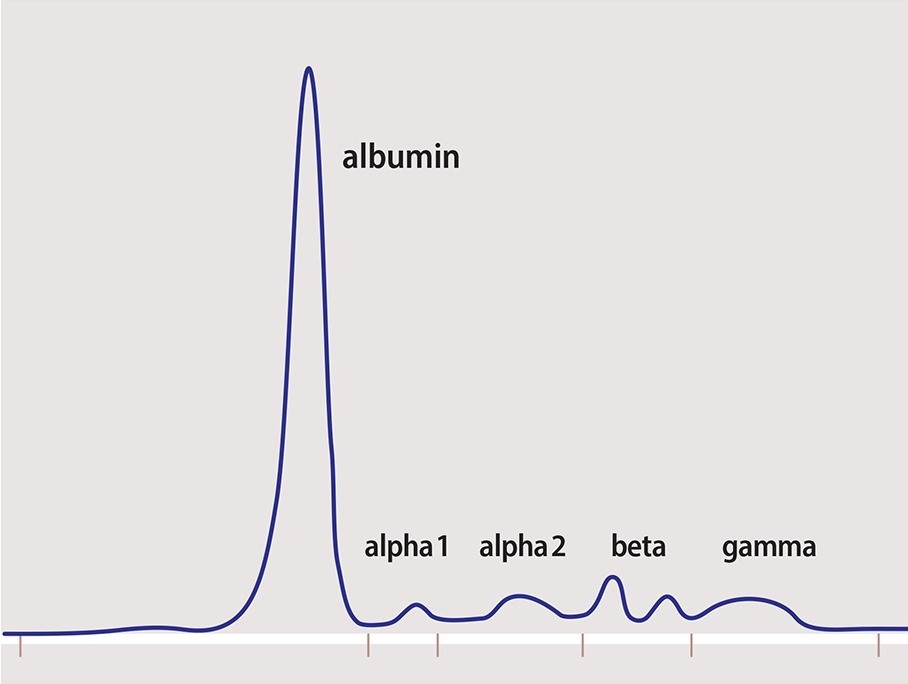Alpha 2 portion: contains ceruloplasmin & haptoglobin. Positive acute phase reactant.
Beta 2 portion: contains beta-lipoprotein (mainly LDL).
IgA and IgM are in beta portion of SPEP.
Iron deficiency anemia causes ⬆️ in transferrin and β1. Familial hypercholesterolemia causes a β2 spike.
Note ⬇️ albumin (➖acute phase reactant) & ⬆️α1/α2 (➕phase reactants).
Dehydration expected to cause ⬆️ albumin (hemoconcentration).
CVID expected to cause flattening of γ portion.
AAT def. causes flattening of α1 (SPEP now replaced w/ serum AAT level).
Loss of small-size proteins in urine (⬇️albumin, Ig) with compensatory ⬆️liver production of large proteins leading to α2 spike (α2-Macroglobulin & VLDL).
IDA can cause a β1 spike.
Early cirrhosis: beta-gamma bridging (related to increase in IgA and transferrin production?). Fairly characteristic of cirrhosis.
Advanced cirrhosis: poor synthetic function. ⬇️albumin.
A:G ratio<1 (⬇️albumin, ⬆️Ig).
There is evidence of monoclonal gammapathy (narrow-based peak). M-protein level seems elevated and predominant in the γ region, mostly compatible with smoldering or active IgG MM.
IgA MGUS should cause a smaller spike shifted more to the left.
If a plasma cell disorder is still suspected despite a normal SPEP, order a serum free light chain assay (sFLC). Up to 20% of plasma dyscrasias only produce light chains lost in urine. A normal sFLC ratio is 0.26-1.65 (⬆️ if GFR ⬇️).
Understanding and Interpreting Serum Protein Electrophoresis
aafp.org/afp/2005/0101/…
sciencedirect.com/topics/medicin…
Interprétation de l’électrophorèse
des protéines sériques. (in French)
fmc-tourcoing.org/new/wp-content…
Interesting cases:
ucsdlabmed.wikidot.com/chapter-7-labo…















